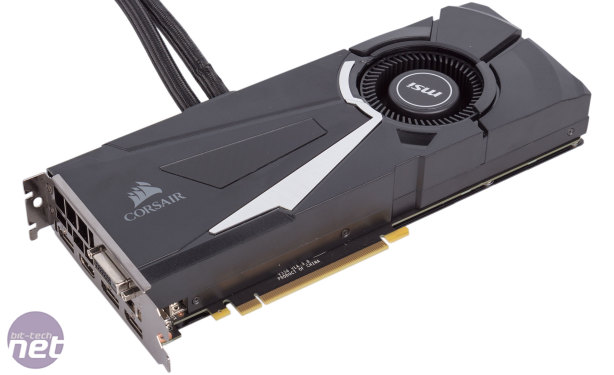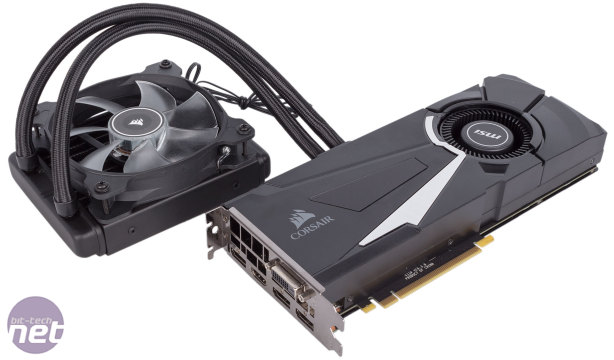Performance Analysis
Performance is pretty much in line with the other overclocked GTX 1070 we've seen, the Asus Strix model, although that does come out a touch faster (just over 1 percent on average) thanks to its higher overclock. The MSI card here offers close to 10 percent more performance than a reference GTX 980 Ti or R9 Fury X, although with the latter the advantage is considerably less in DirectX 12 games and this is balanced by much better performance in the DX11 titles.Ultimately, this card will blast through games at 1080p, have very few issues remaining smooth at 1440p and will even make a good go of 4K, although at this resolution you'll have to dial down the details occasionally, as the Fallout 4 and The Division tests show. It will also probably offer strong VR performance, but until we're able to benchmark that effectively we won't know for sure.
Clock speeds in the card's OC Mode were not constant, but averaged out to 1,900MHz or thereabouts. Dropping to Gaming Mode saw 1,886MHz as the most common speed and the card was boosting to between 1,797MHz and 1,835MHz in Silent Mode. Clearly, there is very little difference between the three modes, and the Unigine Valley results expose this clearly with only a 3 percent difference in scores between Silent Mode and OC Mode.
The power consumption figures are impressively low, especially considering there's a pump to deal with – the card probably has a relatively strict power limit, which would also explain the fluctuating clock speeds. We did remove the rear 140mm fan from our system to accommodate the radiator here, but as this comes with a 120mm fan of its own this shouldn't make too much difference to the overall numbers. Either way, performance per watt is definitely high.
The benefit of water-cooling is clear in the delta T results – 19°C is a fantastic result, and 12°C less than the R9 Fury X, which is the logical comparison. As usual, there is no real difference in power consumption or temperature between the different clock speed modes.
While the water-cooling clearly delivers in terms of temperatures, on the noise front it's not so good. The issue isn't the pump, which is quieter than Corsair's recent offerings and definitely quieter than the H75 unit in our test system. Nor is it the radial blower fan, which operates at a fixed speed of 33 percent (about 1,100 RPM and the minimum you can set it to) in Silent Mode and Gaming Mode or 36 percent (about 1,200 RPM) in OC Mode – in all instances it is practically inaudible. That 120mm fan, however, is certainly very noticeable. However, the big caveat is that it runs by default at full speed. Clearly, as the delta T results show, you could lower the speed significantly while still maintaining healthy temperatures, and it wouldn't be all that difficult to do so.
Overclocking the card netted us performance uplifts often above 10 percent and put the card just ahead of the GTX 1070 Strix OC when it too was overclocked, although in real terms the difference between them is none. Power consumption rose by about 20W, with the system now peaking at 322W. Clock speeds peaked at 2,100MHz, but were more commonly at 2,025MHz or 2,050MHz. The delta T increased by just 1°C, and since both fans were running at fixed speeds there was no change in noise.
Conclusion
The MSI GTX 1070 Sea Hawk X is a unique product – it's the only all-in-one liquid-cooled GTX 1070 on the market. Clearly, if you just want maximum GTX 1070 performance for as little money as possible, or you're happy with an air-cooled card (and there are plenty to choose from), this isn't the card for you.What the GTX 1070 Sea Hawk X purports to offer, however, is all (or most) of the benefits of a proper, custom water-cooling configuration without any of the hassle or warranty voiding that comes with it and at a lower price. And for the most part, it succeeds. As the temperature chart shows, the card offers superior cooling to anything you'll see outside of a custom loop. It doesn't require any maintenance or assembly beyond the radiator installation, and has a three year warranty too, so it ticks those boxes as well.
In terms of cost, a Founders Edition card, waterblock and backplate will already run you close to £500, and that's before you've added a pump, tubing, fittings, reservoir and radiator to the mix. Unless you already have a custom loop capable of slotting a GTX 1070 neatly into, there's simply no cheaper way to water-cool this GPU. NZXT's Kraken G10 and a cheap AIO cooler could work, but it won't look as good and this route adds installation hassle as well as potential issues with keeping the VRM and memory chips cool.
Our only real gripe with this card is the noise, or rather the inability to control the noise by default. The impressively low temperatures are all well and good, but much of the reason for choosing liquid over air is noise and while the card isn't loud with the fan at full pelt it is more audible than we'd like. It's not the end of the world, however. As we said, there are advantages to this – being able to replace the fan easily, for example, and being able to hook it up to any fan controller you like. Even a simple Molex adaptor could be used to limit the speed, or alternatively the fan control suites of modern motherboards, especially those from Asus and MSI, are excellent nowadays. Still, in the wake of Asus's FanConnect feature that has fan headers onboard the graphics card to allow for GPU temperature controlling of standard fans, not having something similar here is a real shame. Being able to control the fan (and its LED) through MSI Afterburner or the Gaming App, for example, would be a real boon. Speaking of software, we'd like to see a more integrated approach, and better use of the clock speed modes to produce tangible differences between them.
Even so, the Sea Hawk X is still a strong product for what it is. It fills the niche well for those looking for a low-cost (relatively), low-hassle alternative to full liquid-cooling for the GTX 1070.


MSI MPG Velox 100R Chassis Review
October 14 2021 | 15:04












Want to comment? Please log in.